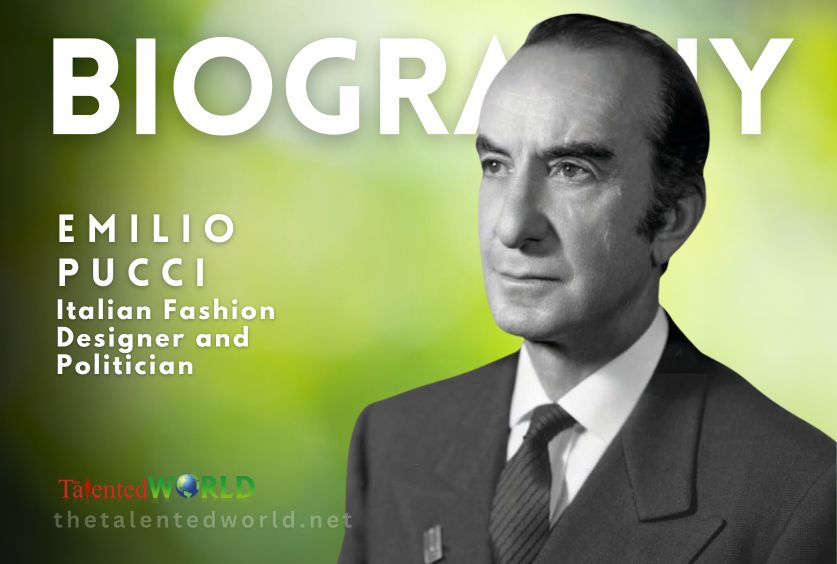
Quick Facts
| Fact | Details |
|---|---|
| Full Name | Don Emilio Pucci, Marchese di Barsento |
| Born | November 20, 1914 |
| Place of Birth | Naples, Italy |
| Died | November 29, 1992 |
| Place of Death | Florence, Italy |
| Education | University of Georgia, Reed College (MA), University of Florence (laurea) |
| Occupation | Fashion Designer |
| Known for | Geometric prints |
| Label | Emilio Pucci |
| Net Worth | Approx. $4 million |





